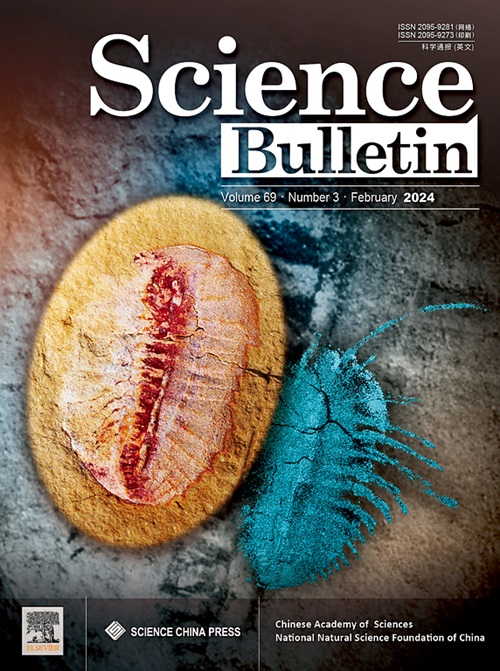The westerlies-monsoon interaction shaped asymmetric lake expansions over the Tibetan Plateau in warming periods
IF 21.1
1区 综合性期刊
Q1 MULTIDISCIPLINARY SCIENCES
引用次数: 0
Abstract
Modelling studies and recent observations suggest that the westerlies-monsoon interactions (WMI) have led to a spatial imbalance in lake expansions across the Tibetan Plateau (TP) during the past decades under anthropogenic warming. However, whether such imbalance reflects a short-term phenomenon or a long-term climatic trend remains unclear. Here, we present a 240,000-year lake level reconstruction from the inner TP to examine the extent to which WMI also operated for previous interglacials, natural warm regimes with large-scale climatic boundary changes. Results suggest pronounced lake expansions accompanied by enhanced rainfall during the recent three interglacials, marine isotope stage (MIS) 7, 5, and 1, notably with varying amplitudes of “V” shape (MIS 5 < MIS 7 or MIS 1). This lake expansion pattern is coherent with North Hemisphere ice volume (NHIV) variations among these interglacials. Model simulation further suggests more NHIV may impact WMI by modulating westerlies’ position, causing rainfall increase and lake expansion over the inner TP relative to its marginal areas. Our findings confirm that the projected importance of WMI to drive the spatial heterogeneity of hydroclimate changes has been maintained during the past natural warm periods. We thus predict that the climate warming and NHIV decreasing will further amplify the spatial imbalance of lake expansions across the TP, with more pronounced lake expansions in the north relative to the south.
在变暖时期,西风带-季风相互作用在青藏高原上形成了不对称的湖泊扩张。
模拟研究和最近的观测表明,在人为变暖的影响下,西风带-季风相互作用(WMI)导致了青藏高原湖泊扩张的空间不平衡。然而,这种不平衡反映的是短期现象还是长期气候趋势尚不清楚。在这里,我们提出了一个24万年的湖平面重建,从内部TP来检查WMI在以前的间冰期的作用程度,自然温暖状态与大规模气候边界变化。结果表明,近3次间冰期(MIS) 7、5、1期)湖泊扩张明显,降水增加,且呈“V”型(MIS 5)振幅变化
本文章由计算机程序翻译,如有差异,请以英文原文为准。
求助全文
约1分钟内获得全文
求助全文
来源期刊

Science Bulletin
MULTIDISCIPLINARY SCIENCES-
CiteScore
24.60
自引率
2.10%
发文量
8092
期刊介绍:
Science Bulletin (Sci. Bull., formerly known as Chinese Science Bulletin) is a multidisciplinary academic journal supervised by the Chinese Academy of Sciences (CAS) and co-sponsored by the CAS and the National Natural Science Foundation of China (NSFC). Sci. Bull. is a semi-monthly international journal publishing high-caliber peer-reviewed research on a broad range of natural sciences and high-tech fields on the basis of its originality, scientific significance and whether it is of general interest. In addition, we are committed to serving the scientific community with immediate, authoritative news and valuable insights into upcoming trends around the globe.
 求助内容:
求助内容: 应助结果提醒方式:
应助结果提醒方式:


